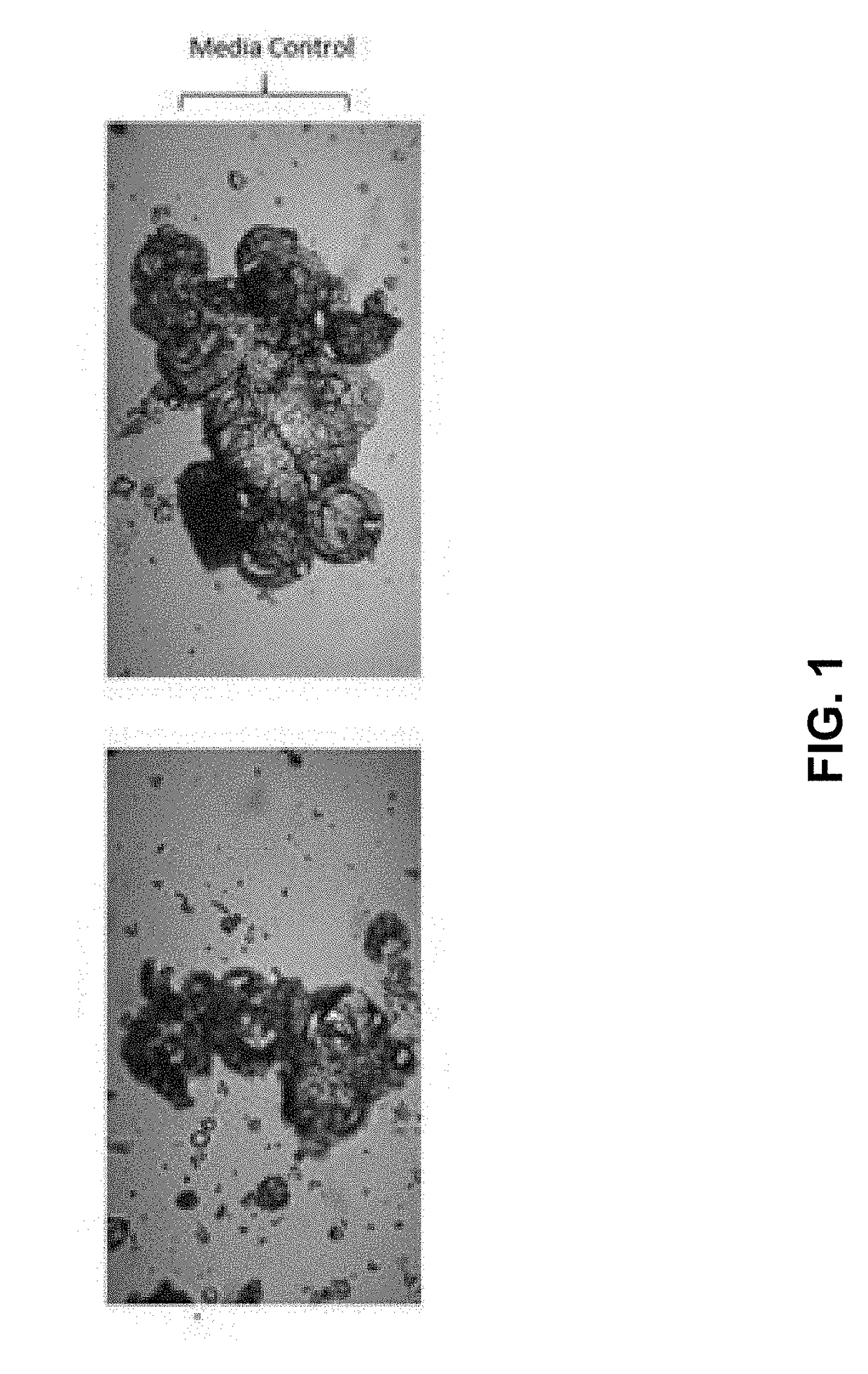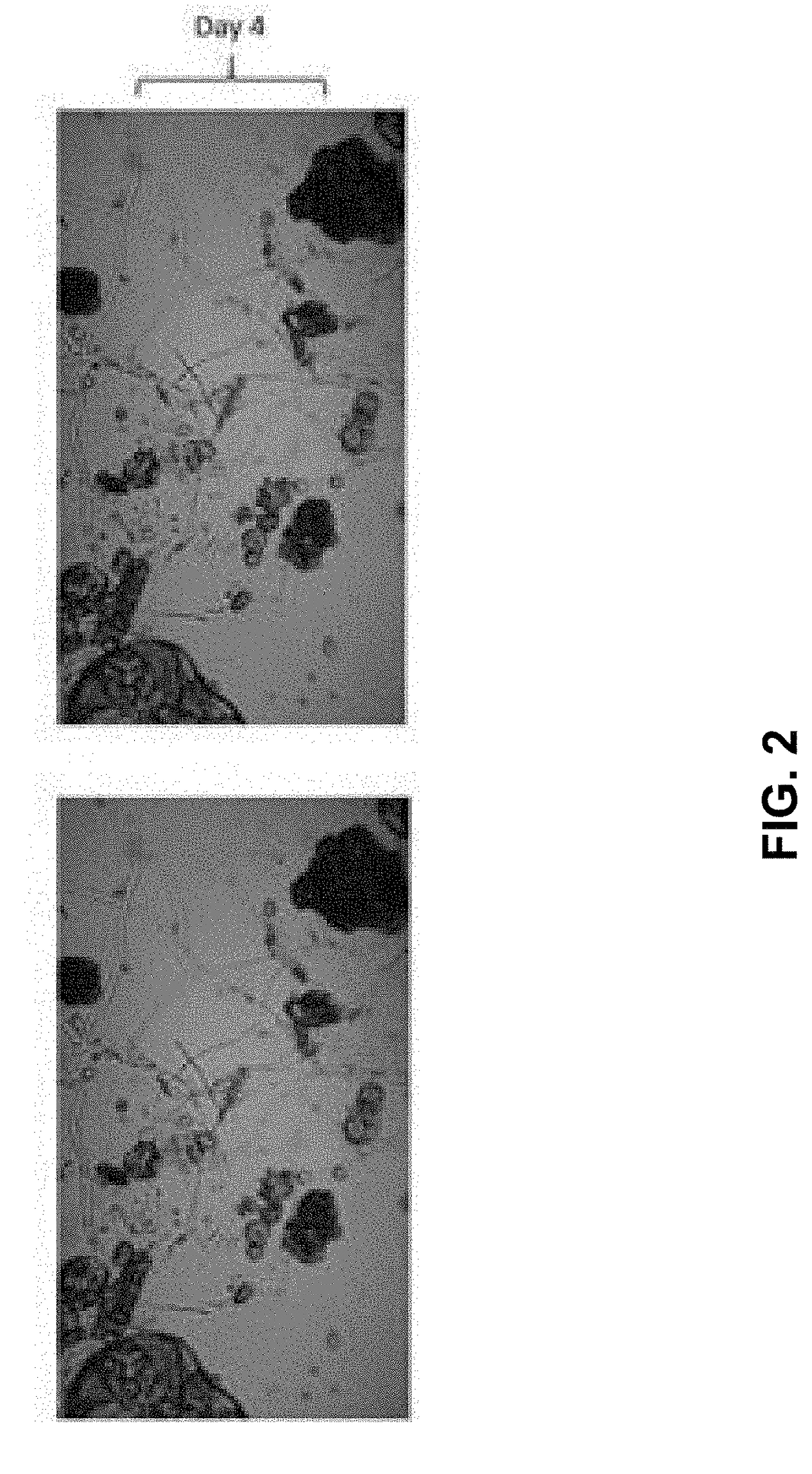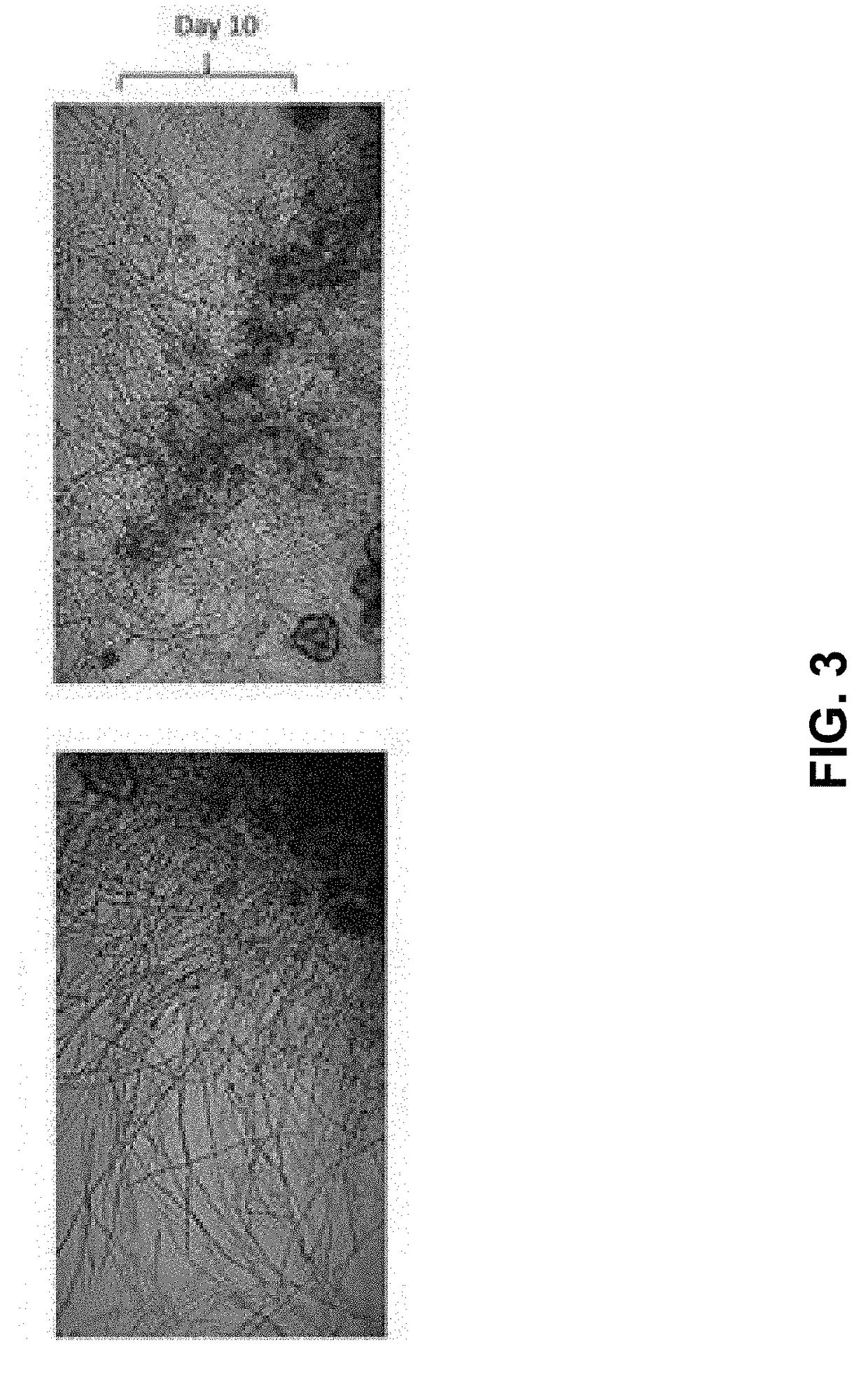Methods for the production and use of myceliated high protein food compositions
- Summary
- Abstract
- Description
- Claims
- Application Information
AI Technical Summary
Benefits of technology
Problems solved by technology
Method used
Image
Examples
example 1
[0062]Eighteen (18) 1 L baffled DeLong Erlenmeyer flasks were filled with 0.400 L of a medium consisting of 25 g / L organic pea protein concentrate (labeled as 80% protein), 25 g / L organic rice protein concentrate (labeled as 80% protein), 4 g / L organic dry malt extract, 2 g / L diammonium phosphate, 1 g / L organic carrot powder and 0.4 g / L magnesium sulfate heptahydrate in RO water. The flasks were covered with a stainless steel cap and sterilized in an autoclave on a liquid cycle that held the flasks at 120-121° C. for 1 hour. The flasks were carefully transferred to a clean HEPA laminar flowhood where they cooled for 18 hours. Sixteen (16) flasks were subsequently inoculated with 2 cm2 pieces of mature Petri plate cultures of P. ostreatus, P. eryngii, L. nuda, H. erinaceus, L. edodes, A. blazeii, L. sulfureus and B. edulis, each strain done in duplicate from the same plate. All 18 flasks were placed on a shaker table at 150 rpm with a swing radius of I″ at room temperature. The Oyste...
example 2
[0063]Three (3) 4 L Erlenmeyer flasks were filled with 1.5 L of a medium consisting of 5 g / L pea protein concentrate (labeled as 80% protein), 5 g / L rice protein concentrate (labeled as 80% protein), 3 g / L malt extract and 1 g / L carrot powder. The flasks were wrapped with a sterilizable biowrap which was wrapped with autoclave tape 5-6 times (the taped biowrap should be easily taken off and put back on the flask without losing shape) and sterilized in an autoclave that held the flasks at 120-121° C. for 1 hour. The flasks were carefully transferred to a clean HEPA laminar flowhood where they cooled for 18 hours. Each flask was subsequently inoculated with 2 cm2 pieces of 60 day old P1 Petri plate cultures of L. edodes and placed on a shaker table at 120 rpm with a 1″ swing radius at 26° C. After 7-15 days, the inventors noticed, by using a pH probe on 20 mL culture aliquots, that the pH of every culture had dropped nearly 2 points since inoculation. L. edodes is known to produce var...
example 3
[0064]A 7 L bioreactor was filled with 4.5 L of a medium consisting of 5 g / L pea protein concentrate (labeled as 80% protein), 5 g / L rice protein concentrate (labeled as 80% protein), 3 g / L malt extract and 1 g / L carrot powder. Any open port on the bioreactor was wrapped with tinfoil and sterilized in an autoclave that held the bioreactor at 120-121° C. for 2 hours. The bioreactor was carefully transferred to a clean bench in a cleanroom, setup and cooled for 18 hours. The bioreactor was inoculated with 280 mL of inoculant from a 12 day old flask as prepared in Example 2. The bioreactor had an air supply of 3.37 L / min (0.75 VVM) and held at 26° C. A kick-in / kick-out antifoam system was setup and it was estimated that ˜1.5 g / L antifoam was added during the process. At ˜3-4 days the inventors noticed that the pH of the culture had dropped ˜1.5 points since inoculation, similar to what was observed in the flask culture. A microscope check was done to ensure the presence of mycelium (my...
PUM
 Login to View More
Login to View More Abstract
Description
Claims
Application Information
 Login to View More
Login to View More - R&D
- Intellectual Property
- Life Sciences
- Materials
- Tech Scout
- Unparalleled Data Quality
- Higher Quality Content
- 60% Fewer Hallucinations
Browse by: Latest US Patents, China's latest patents, Technical Efficacy Thesaurus, Application Domain, Technology Topic, Popular Technical Reports.
© 2025 PatSnap. All rights reserved.Legal|Privacy policy|Modern Slavery Act Transparency Statement|Sitemap|About US| Contact US: help@patsnap.com



